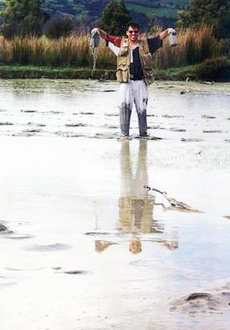

|
Glen SnyderResearch Scientist |

Ph.D (2001) University of Rochester  Back to Snyder's Main Page. Publication list (pdf). Curriculum vitae (pdf) Email: gsnyder@rice.edu Phone: (713)348-4054 Office: Keith Weiss Earth Science 330B |
Geothermal and volcanic studies:
Subduction at tectonic margins is responsible for removing oceanic crust and sediments and reintroducing them into the mantle. My Ph.D. research focused on quantifying the degree to which subducted volatile elements are recycled in island arc systems. Crater lakes, fumaroles, and geothermal gases and condensed fluids were sampled in Central America and New Zealand. Analyses were carried out at the University of Rochester Cosmogenic Isotope Laboratory and the Rare Gas Facility. Logistic support was provided by the semi-autonomous insitutions overseeing geothermal production in Costa Rica, Nicaragua, and El Salvador. Further work was carried out in New Zealand's Taupo Volcanic Zone, with the assistance of the Institute of Geological and Nuclear Sciences. Ongoing projects include gas and fluid studies of mud diapirs in New Zealand's forearc region, as well as collaboration with researchers at the USGS in quantifying the flux of halogens from hot springs in the Cascades.
|